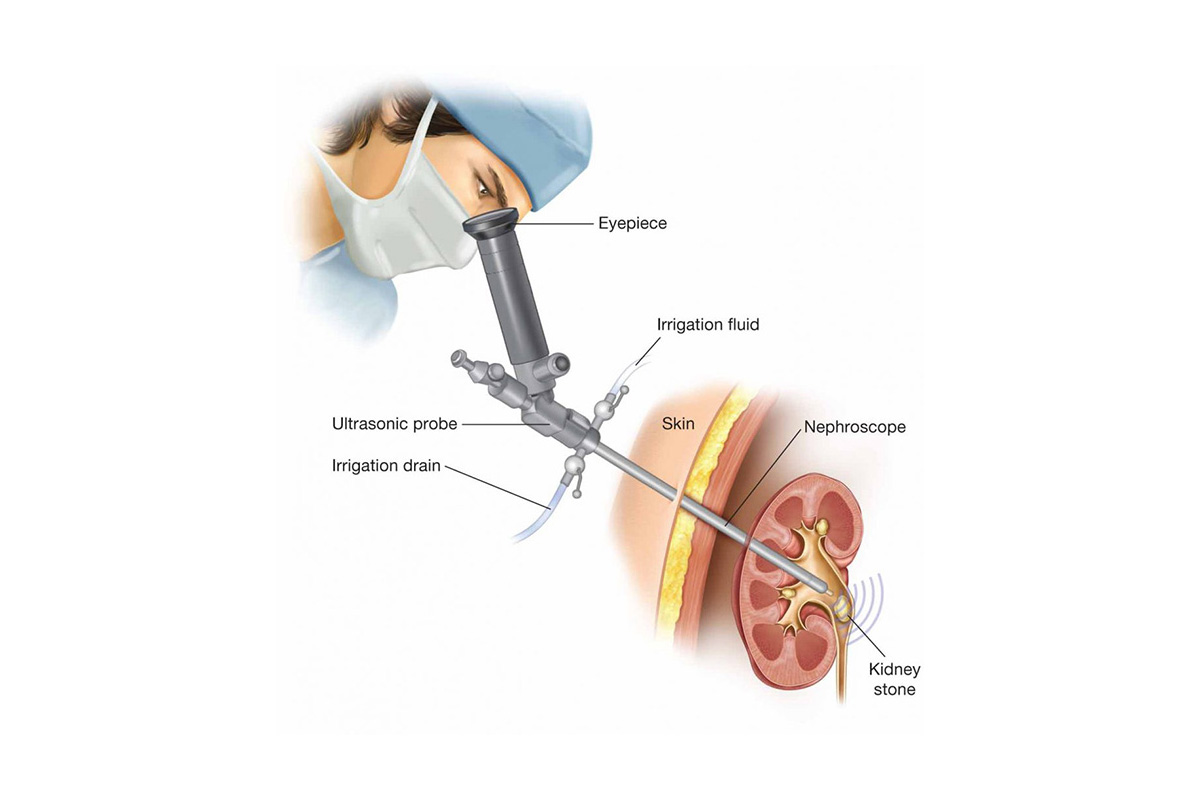
Percutaneous nephrolithotomy (PCNL) is a medical procedure used to remove kidney stones that are too large to pass through the urinary tract or cannot be broken down using other treatments like extracorporeal shock wave lithotripsy (ESWL). Here’s an overview of the procedure:
Preparation: The patient is typically given general anesthesia to ensure they are asleep and pain-free during the procedure.
Access: The surgeon makes a small incision, usually about 1 cm, in the patient’s back.
Insertion: A nephroscope, which is a thin, tube-like instrument with a camera and light, is inserted through the incision and guided into the kidney.
Stone Removal: The surgeon uses the nephroscope to locate the kidney stone. Depending on the stone’s size and composition, it may be broken into smaller pieces using ultrasonic, laser, or pneumatic energy. These fragments are then removed using suction or grasping tools.
Completion: Once the stones are removed, a temporary drainage tube (nephrostomy tube) might be left in place to allow urine to drain from the kidney while it heals.
Recovery: The patient typically stays in the hospital for a day or two for observation and to manage any postoperative pain. Full recovery may take a few weeks.
PCNL is often chosen for larger stones (typically over 2 cm), stones located in challenging positions, or when other less invasive treatments have failed. It has a high success rate and can significantly relieve symptoms and prevent complications associated with kidney stones.
Services
Need Any Help
Need Any Help, Call Us 24/7 For Support
